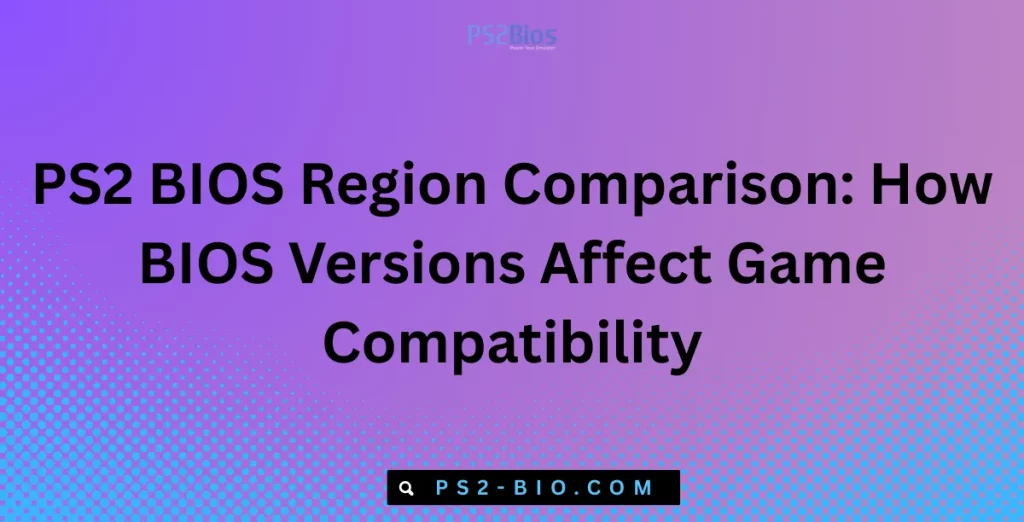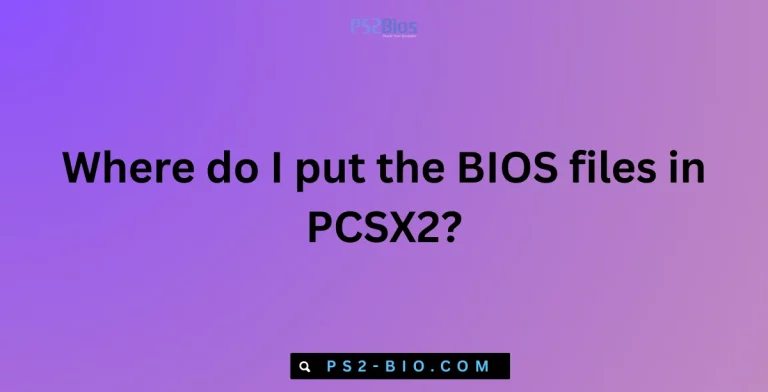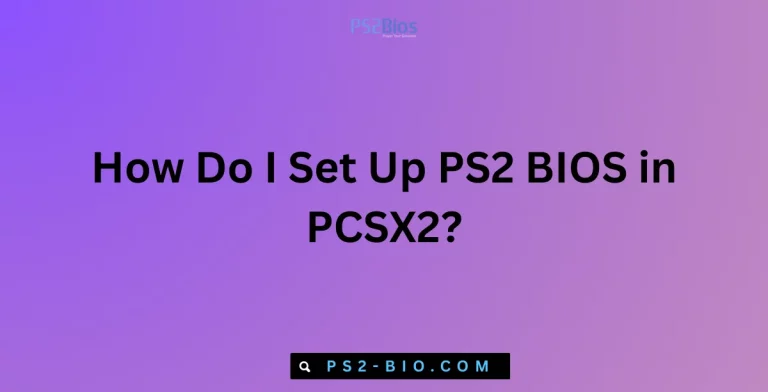PS2 BIOS Region Comparison: How BIOS Versions Affect Game Compatibility
Why do some PlayStation 2 games run smoothly in emulators while others fail to load? The answer often lies in the PS2 BIOS region. Understanding how different BIOS versions affect game compatibility is essential for achieving the most accurate PlayStation 2 emulation experience.

Why Regions Matter in PS2 BIOS
Sony released the PlayStation 2 worldwide, but each region had differences due to:
- Video standards: NTSC (Japan/USA) vs. PAL (Europe)
- Region coding: Preventing cross-region disc playback
- System language: Japanese BIOS includes kanji, while USA/Europe focus on English and local languages
- Release date differences: Some BIOS builds shipped earlier, meaning features evolved over time
These differences directly impact how games behave in emulators. For instance, a PAL-only title may fail to run properly on an NTSC BIOS without adjustments.
PS2 BIOS Regions Explained
1. Japan (NTSC-J) BIOS
- Default video output: NTSC-J (60Hz)
- Primary language: Japanese
- Game compatibility: Required for Japan-exclusive releases like Initial D Special Stage or Super Robot Wars.
- Unique feature: Full support for Japanese fonts and kanji, essential for text-heavy games.
2. USA (NTSC-U/C) BIOS
- Default video output: NTSC-U (60Hz)
- Primary language: English
- Game compatibility: Supports North American releases, including exclusives like Grand Theft Auto: Liberty City Stories.
- Widely used: Considered the most common BIOS for emulation since many guides and players are based in the US.
3. Europe (PAL) BIOS
- Default video output: PAL (50Hz)
- Supported languages: English, French, Spanish, German, Italian, and more
- Game compatibility: Runs European-exclusive titles such as Shadow of Memories PAL version.
- Limitation: Some PAL titles run at 50Hz, which can feel slower compared to 60Hz NTSC regions.
Key Differences in Game Compatibility
1. Region Locking
Just like DVDs, PS2 discs are region-locked. A USA BIOS cannot boot Japanese discs, and vice versa. This is a major factor in why emulators need the correct BIOS for accurate testing.
2. Video Output (PAL vs. NTSC)
- NTSC (Japan/USA): Runs at 60Hz, smoother motion, but designed for NTSC televisions.
- PAL (Europe): Runs at 50Hz, which can cause slower gameplay but sometimes includes higher resolution.
3. Language Support
European BIOS versions offer multilingual support, making them more versatile for non-English-speaking players. In contrast, Japanese BIOS is strictly for Japanese text, which can cause display errors if used with English-only games.
4. Game-Specific Behavior
Some games rely heavily on BIOS functions. Example:
- Gran Turismo 4 may display timing differences between NTSC and PAL BIOS versions.
- Final Fantasy X International requires a Japanese BIOS due to added kanji elements.
PS2 BIOS and PCSX2 Emulator
The PCSX2 emulator uses BIOS files to mimic original console behavior. Choosing the right BIOS ensures:
- Proper game loading without region mismatch errors
- Accurate frame timing for PAL vs. NTSC games
- Correct display of system fonts and languages
PCSX2 allows users to configure multiple BIOS files. This means you can switch between USA, Japan, and Europe BIOS depending on the game you want to play.
Frequently Asked Questions About PS2 BIOS Regions
1. Can I use one BIOS to play all games?
No. While some games may work across regions, many are restricted by disc region coding. For accurate results, use the BIOS matching the game’s original release region.
2. Do PAL BIOS games run slower?
Yes, PAL games run at 50Hz, which is roughly 17% slower than NTSC’s 60Hz. However, PAL versions sometimes include bonus content not found in NTSC releases.
3. Which BIOS is best for PCSX2?
For maximum compatibility, the USA BIOS is often recommended. However, collectors and advanced users should install multiple BIOS versions to cover regional exclusives.
4. Is downloading PS2 BIOS legal?
No. Distributing or downloading PS2 BIOS files is illegal because they are copyrighted by Sony. The only legal method is to dump the BIOS from your own PS2 console.
5. Does BIOS affect graphics quality?
Not directly. Graphics quality depends more on emulator settings. However, the BIOS determines video standard (NTSC vs PAL), which influences resolution and refresh rate.
6. Can I mix PAL BIOS with NTSC games?
This may cause issues. Some games won’t boot, while others may show timing or language problems. Always try to match game region with BIOS region.
Table: Quick PS2 BIOS Region Comparison
| Region | Video Standard | Languages | Key Advantage | Limitation |
|---|---|---|---|---|
| Japan (NTSC-J) | NTSC 60Hz | Japanese | Required for Japanese-exclusive games | Limited to Japanese text |
| USA (NTSC-U/C) | NTSC 60Hz | English | Most common, broadest support | No multilingual support |
| Europe (PAL) | PAL 50Hz | Multilingual | Runs European exclusives, supports multiple languages | Slower gameplay due to 50Hz |
Final Takeaway
The PS2 BIOS region plays a critical role in game compatibility, language support, and performance. Choosing the right BIOS ensures games run as intended on emulators like PCSX2. For the best results, users should keep multiple BIOS versions (USA, Japan, Europe) and switch based on the game’s original release.
This approach guarantees not only higher compatibility but also preserves the authenticity of how PlayStation 2 titles were originally designed to be experienced.






